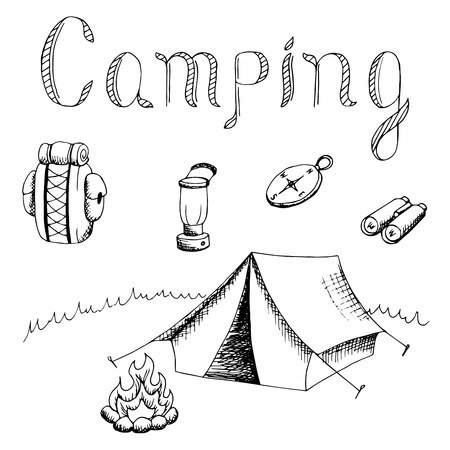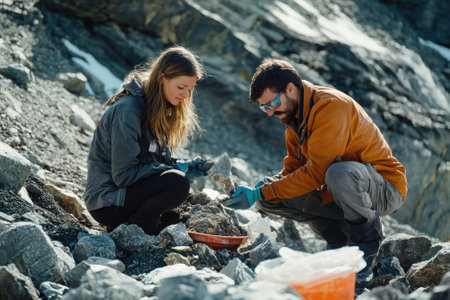1. Introduction: Why Seasonal Backpack Selection Matters
When it comes to camping, picking the right backpack isn’t just about size or brand—it’s about matching your gear to the season. In the United States, weather and terrain can change dramatically from winter snowfields to hot summer deserts, and each season brings its own set of challenges and adventures. That means the best backpack for a cozy fall hike in Vermont probably won’t cut it for a snowy trek in Colorado.
Every season impacts your camping experience in unique ways:
| Season | Weather Conditions | Terrain Challenges | Activity Focus | Backpack Needs |
|---|---|---|---|---|
| Winter | Cold, snow, ice | Slick trails, deep snow | Snowshoeing, winter hiking | Insulation space, waterproofing, easy access with gloves |
| Spring | Rain, mud, unpredictable temps | Muddy paths, swollen streams | Day hikes, wildlife watching | Water resistance, extra compartments for layers |
| Summer | Heat, sun, storms | Dusty or rocky trails | Backpacking trips, swimming spots | Ventilation, hydration compatibility, lightweight design |
| Fall | Crisp air, early frosts, fallen leaves | Slick leaves, variable weather | Leaf-peeping hikes, overnight camping | Flexible storage, warmth layer space, weatherproofing |
Selecting a backpack that matches the season helps you stay comfortable and safe—whether you’re braving icy trails or soaking up the sun on a summer adventure. The right pack lets you carry exactly what you need for changing weather and activities while making your trip more enjoyable. Next up: we’ll break down what to look for in backpacks suited to each time of year.
2. Winter Backpacks: Staying Warm and Dry
Why You Need a Specialized Winter Backpack
Camping in winter isn’t just about layering up—it’s also about having the right gear to keep your supplies dry, organized, and accessible even when the weather gets rough. A winter backpack is designed to handle snow, freezing temperatures, and unpredictable conditions. Here’s what makes a great winter pack stand out from the rest.
Essential Features for Winter Backpacks
Weatherproof Materials
Look for backpacks made with tough, waterproof or highly water-resistant fabrics like ripstop nylon or polyester with DWR (Durable Water Repellent) coating. Taped seams and weather-sealed zippers are key for keeping snow and moisture out.
Integrated Snow Gear Storage
Winter adventures usually mean carrying extra equipment—think snowshoes, trekking poles, ice axes, or avalanche gear. Choose a backpack with dedicated attachment points, reinforced loops, and external straps so you can easily carry your winter essentials.
Extra Insulation
A winter backpack should help protect your gear—and sometimes even your snacks—from freezing temperatures. Some packs feature insulated pockets or hydration sleeves that prevent water bottles and bladders from turning into blocks of ice.
Hydration Compatibility
Staying hydrated in cold weather is crucial. Look for backpacks with insulated hydration sleeves or hose ports so you can sip water without worrying about frozen tubes.
Quick Comparison: Top Features of Winter Backpacks
| Feature | Why It Matters | What to Look For |
|---|---|---|
| Weatherproof Material | Keeps your gear dry in snow or sleet | DWR coating, taped seams, waterproof zippers |
| Snow Gear Storage | Makes it easy to carry extra winter equipment | Attachment points for ice axes, poles, snowshoes |
| Insulated Compartments | Protects food, electronics, and water from freezing | Padded or fleece-lined pockets, insulated sleeves |
| Hydration System Compatible | Makes drinking on the go easy—even in freezing temps | Insulated hose port, compatible hydration sleeve |
| Easy-Access Pockets | No need to take off gloves to grab essentials | Larger zipper pulls, external stash pockets |
Packing Tips for Cold-Weather Camping Trips
- Keep Essentials Accessible: Use outer pockets for snacks, maps, and hand warmers.
- Avoid Overpacking: Heavy loads are harder to manage in snowy terrain—pack smart and keep it light.
- Add Extra Protection: Use dry bags inside your backpack for double security against melting snow.
- Choose Bright Colors: A brightly colored pack is easier to spot in snowy landscapes.
If you plan to camp through a U.S. winter—whether that means snowy trails in Colorado or chilly nights in the Pacific Northwest—a specialized winter backpack is your best friend for staying comfortable and safe all season long.

3. Spring Backpacks: Versatility for Unpredictable Conditions
Spring camping can be a real wild card. One day it’s sunny, the next you’re hiking through a surprise downpour or chilly morning fog. That’s why picking the right backpack for spring is all about versatility and being ready for anything Mother Nature throws your way.
Key Features to Look For in Spring Camping Backpacks
When shopping for a spring backpack, keep these features in mind:
- Water-Resistance: Sudden rain showers are common in spring, so a backpack with water-resistant materials or an included rain cover is essential.
- Expandability: Weather changes fast, so you’ll want space for extra layers, snacks, and maybe even your camera for those blooming wildflowers.
- Quick-Access Compartments: Easy-to-reach pockets let you grab your rain jacket, trail mix, or map without digging through your whole pack.
Popular Spring Backpack Picks
| Backpack Model | Water-Resistant? | Expandable Storage | Quick-Access Pockets | Recommended Use |
|---|---|---|---|---|
| Osprey Talon 33 | Yes (Raincover sold separately) | Yes (Stretch mesh) | Hipbelt & side pockets | Day hikes & overnight trips |
| The North Face Recon | Yes (Water-repellent finish) | No | Front stash pocket & side water bottle holders | Campsite day trips & urban adventures |
| REI Co-op Flash 22 | No (But quick-dry fabric) | No (Compact design) | Zippered top & front stash pocket | Packed light for short hikes |
| Deuter Futura Vario 50+10 | Yes (Integrated rain cover) | Yes (Expandable collar) | Lid and hipbelt pockets | Multi-day camping trips |
Packing Tips for Spring Adventures
- Packing Cubes: Keep your gear organized when the weather shifts quickly.
- Ziploc Bags: Store electronics and essentials in resealable bags just in case of heavy rain.
- Poncho or Pack Rain Cover: Always stash one where you can grab it fast.
- Shoes Compartment: Some packs have a separate area for muddy boots—super handy after a wet hike.
Your Spring Camping Checklist:
- Poncho or lightweight rain jacket (easy-access pocket)
- Extra socks and base layers (for temperature swings)
- Trekking poles (trail conditions can get muddy)
- A dry bag or two for valuables and electronics
- Sunscreen—yes, even on cloudy days!
- A compact camp towel for drying off gear or yourself if caught in a shower
4. Summer Backpacks: Lightweight and Breathable Designs
When the summer sun is blazing and the trails are heating up, the last thing you want is a heavy, stuffy backpack slowing you down. For warm-weather camping trips in the U.S., choosing a summer backpack with features that keep you cool and comfortable is key. Let’s break down what to look for so you can beat the heat and stay organized on every adventure.
Must-Have Features for Summer Backpacks
| Feature | Why It Matters | Popular Examples |
|---|---|---|
| Mesh Ventilation Panels | Improves airflow between your back and the pack, reducing sweat build-up. | Osprey Atmos AG, Gregory Zulu |
| Lighter Materials | Makes the backpack easier to carry during long, hot days. | REI Flash Pack, Deuter Speed Lite |
| Hydration Pack Compatibility | Keeps water easily accessible so you stay hydrated in the heat. | CamelBak Fourteener, Osprey Talon |
| Smart Organization | Keeps sunscreen, snacks, sunglasses, and other summer essentials handy. | Granite Gear Crown 2, Patagonia Nine Trails |
Tips for Choosing Your Summer Backpack
- Go light: Choose a pack under 3 lbs to avoid feeling weighed down.
- Breathe easy: Look for suspended mesh back panels or ventilated straps.
- Stay hydrated: Opt for packs with built-in hydration sleeves or external water bottle pockets.
- Pocket power: Multiple quick-access pockets make it easy to grab what you need without unpacking everything.
- Weather-ready: Some packs offer removable rain covers—helpful for unexpected summer storms.
Top Picks for American Campers This Summer
- CamelBak Fourteener: Famous for its hydration system and breathable design—perfect for desert hikes or humid forests.
- Osprey Talon 22: Super lightweight and fits close to your body, making it ideal for active day hikes.
- REI Co-op Flash Pack: Affordable, ultralight, and great ventilation—awesome for weekend getaways or festival camping.
- Patagonia Nine Trails: Known for its durability and smart storage options, keeping your summer gear organized and accessible.
The Bottom Line on Summer Packs
Packing smart with a well-ventilated, lightweight backpack makes all the difference when camping through America’s hottest months. Focus on breathability, hydration access, and easy organization to keep cool and comfortable from trailhead to campsite.
5. Fall Backpacks: Balancing Warmth and Storage
As fall rolls in, temperatures can swing from chilly mornings to warm afternoons and back again, making it essential to pick a backpack that keeps up with the changing weather. When you’re planning your autumn camping adventures, look for backpacks that offer adaptable storage, durable construction, and plenty of extra pockets. These features are key for stashing layers, snacks, and gear so you’re ready for anything Mother Nature throws your way.
Why Adaptable Storage Matters in Fall
Fall camping often means longer hikes and more unpredictable weather. Your backpack needs to handle bulking up with jackets or shedding them when the sun comes out. Choose a pack with adjustable straps and compartments that let you expand or compress the load as needed. This flexibility helps you stay comfortable on the trail and organized at camp.
Durability for the Trail Ahead
Leaves aren’t the only things falling in autumn—branches, acorns, and wet conditions can put your gear to the test. Look for backpacks made with tough fabrics like ripstop nylon or polyester that resist tearing and stand up to dampness. Reinforced stitching is a big plus if you’re carrying heavier loads.
The Power of Extra Pockets
Layering is a must in fall, and all those extra hats, gloves, and snacks need somewhere to go. Packs with multiple pockets make it easy to grab what you need without digging through everything else. Hip belt pockets are perfect for trail mix or energy bars, while larger side pockets can fit water bottles or rain shells.
Top Features for Fall Backpacks
| Feature | Why It’s Important | Pro Tip |
|---|---|---|
| Expandable Compartments | Easily adjust space for layers and bulky items | Look for packs with zippered gussets or roll-tops |
| Water-Resistant Material | Keeps your gear dry during surprise showers | Add a rain cover for extra protection |
| Padded Hip Belt & Shoulder Straps | Makes carrying heavy loads more comfortable on long hikes | Cushioning helps reduce fatigue over rough terrain |
| Multiple Pockets & Loops | Organizes small essentials for quick access | Perfect for storing gloves, beanies, snacks, and headlamps |
| Daisy Chains/Attachment Points | Adds versatility for trekking poles or extra gear | Great for fall hikes when daylight gets shorter—clip on a light! |
Packing Tips for Fall Camping Trips
- Layer Up: Always pack an extra fleece or insulated jacket just in case.
- Stay Organized: Use packing cubes or stuff sacks inside your backpack to keep clothes separated from food and electronics.
- Don’t Forget Hydration: Cooler temps can be deceiving; keep water handy in easily accessible pockets.
- Bring Snacks: Fall hikes burn energy fast—stash granola bars, jerky, and fruit within reach.
- Pocket Power: Use hip belt pockets for items you’ll want quick access to without stopping.
A good fall backpack is all about versatility. With adaptable storage, rugged materials, and smart pocket placement, you’ll be ready to enjoy every colorful mile of the season’s best hiking trails.


